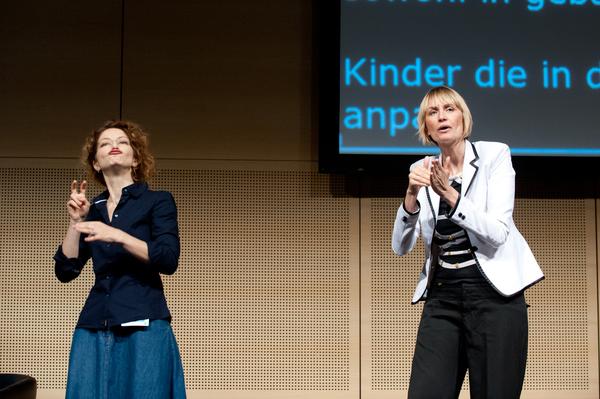Austrian Sign Language
Oral traditions throughout Austria, inscribed 2013
Austrian Sign Language (ÖGS) serves as the social and cultural foundation of Austria’s deaf community. As the mother tongue of deaf people in Austria, it is a crucial part of their identity. It is used all across Austria and includes multiple dialects distinguished by regionally specific characteristics. Although ÖGS has been legally recognised as a language since 2005, its users still consider themselves a linguistic and cultural minority.
ÖGS is used primarily by deaf people and is occasionally also learned by hearing people as an additional language. It evolved from the communicative and social practices of the deaf community, for whom it represents an important source of identity. The so-called “visual approach” to reality is an interesting topic of research, and it can indeed also offer “non-hearing” perspectives in terms of perception and information processing, which promotes cultural diversity and provides special insights on creativity in general and sign-language users in particular.
Vienna’s first school for the deaf was founded in 1779, and institutionalised associations for the deaf became established in Austria as early as 1865, making possible the survival of ÖGS. Since that time, the language has been cultivated and handed down in schools, associations, and families, and it is also passed on in the form of poetry, theatre, and performing arts. At present, the Österreichischer Gehörlosenverband (ÖGLB – Austrian National Association of the Deaf) is working with academic institutions on the standardisation and safeguarding of ÖGS via language policy. Other measures to promote awareness-raising and to ensure that ÖGS continues to be passed on include lobbying for bilingual/bicultural inclusive education at schools for the deaf and in the mainstream school system as well as the expansion of offerings that train children of deaf adults (CODA) for careers as interpreters.
Vienna’s first school for the deaf was founded in 1779, and institutionalised associations for the deaf became established in Austria as early as 1865, making possible the survival of ÖGS. Since that time, the language has been cultivated and handed down in schools, associations, and families, and it is also passed on in the form of poetry, theatre, and performing arts. At present, the Österreichischer Gehörlosenverband (ÖGLB – Austrian National Association of the Deaf) is working with academic institutions on the standardisation and safeguarding of ÖGS via language policy. Other measures to promote awareness-raising and to ensure that ÖGS continues to be passed on include lobbying for bilingual/bicultural inclusive education at schools for the deaf and in the mainstream school system as well as the expansion of offerings that train children of deaf adults (CODA) for careers as interpreters.
Contact
Downloads
- Application form (in German only) 325 KB (pdf)
- Expertise Dotter (in German only) 679 KB (pdf)
- Expertise Rathmann (in German only) 480 KB (pdf)
- Expertise Frey (in German only) 138 KB (pdf)


![[Translate to EN:] © J. Ségur/ZED, with the permission of UNESCO](/fileadmin/_processed_/d/b/csm_Convention-2003-IKE_0832a6a47d.jpg)
![[Translate to EN:] © ÖUK](/fileadmin/_processed_/3/9/csm_P1011318_7eac86402f.jpg)

![[Translate to EN:] © Weitblickfilm](/fileadmin/_processed_/9/8/csm_Workshop_17_2dee1e1fd8.jpg)